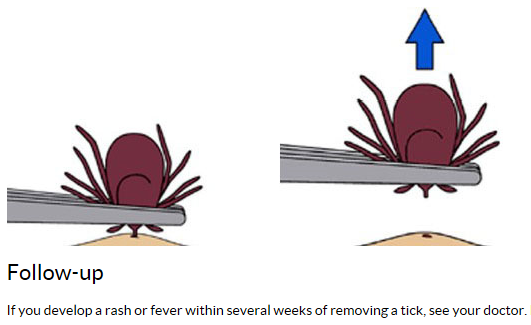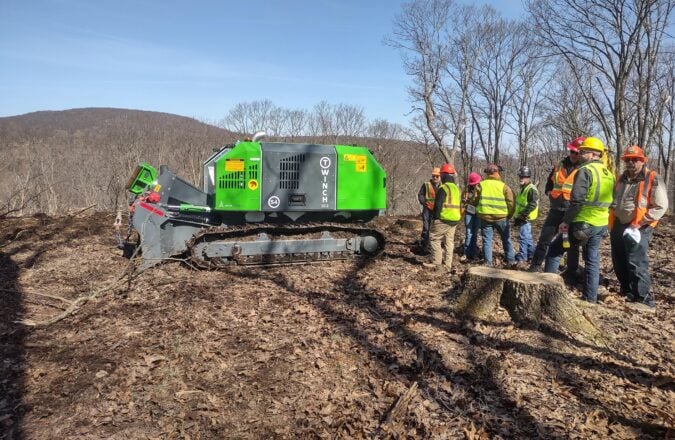Powassan and Other Tick-Borne Diseases

Ticks have made headlines in recent years with seven new tick-borne pathogens having been discovered in the U.S. since 2004. The latest is called Powassan, named after the municipality in Ontario where the illness was first identified in 1958. Though extremely rare, the Powassan virus is very dangerous with a fatality rate of 10 percent as no medicine exists to cure the disease. Additionally, 50 percent of Powassan survivors are likely to suffer long-term neurological damage.
In addition to Powassan, other significant tick-transmitted diseases found within the U.S. include:
- Anaplasmosis
- Babesiosis
- Ehrlichiosis
- Lyme disease
- Rocky Mountain Spotted Fever
- Tularemia
Ticks are a fact of life across most parts of the U.S., especially in wooded areas. These tiny eight-legged critters are parasitic relatives of spiders and scorpions that feed on the blood of mammals and birds. According to the Centers for Disease Control and Prevention’s Division of Vector-Borne Diseases (DVBD), ticks are the most important vector for transmitting disease to humans and are responsible for 94 percent of such cases in 2014. The DVBD also notes that the areas where ticks, and the diseases carried by tick, continues to expand.

Control and Prevention | Source: Center for Disease
In the Lake States Region, blacklegged ticks are often known as deer ticks (or sometimes “bear ticks”). According to lymedisease.org, blacklegged (Ixodes) ticks are the greatest threat to humans because they carry seven of the 18 reportable tick-borne diseases in the U.S. The risk of co-infections a situation in which more than one tick-borne disease is acquired from a single tick bite – is high. It is believed co-infections are very common with some surveys suggesting rates as high as 50 percent. Accurate diagnosis and treatment can be very difficult when simultaneously dealing with multiple pathogens.
As a tick transitions (first from larva to nymph, and then to adult over the course of up to three years) it will feed on the blood of three different hosts such as mice, birds, squirrels or woodchucks. Disease agents from a larval or nymph stage host can thereby be transmitted to an adult stage host through the tick. Humans are potential hosts for both nymph and adult-stage ticks.

Control and Prevention | Source: Center for Disease
So, what can you do to reduce the likelihood of contracting Powassan and other tick-borne diseases? The best prevention is to protect yourself with tick repellant as well as appropriate clothes and shoes especially from blacklegged ticks. Here are a few additional tips the CDC recommends that will help you to protect yourself:
- Learn which tick-borne diseases are common in your area.
- If possible, avoid places with thick vegetation, high grass and leaf litter.
- Use repellent that contains 20 percent or more DEET on exposed skin for protection that lasts several hours.
- Use products that contain permethrin to treat clothing such as boots, pants and socks. Or, wear clothing pretreated with permethrin.
- Bathe or shower as soon as possible after potential exposure to wash ticks off before they bite.
If you find a tick stuck on you, carefully remove attached ticks as soon as possible as follows:
- Grasp the tick firmly and as close to your skin as possible.
- Pull the tick’s body away from your skin with a steady motion.
- Clean the area with soap and water.
- Removing infected ticks within 24 hours reduces your risk of being infected with the Lyme disease bacterium.

Control and Prevention | Source: Centers for Disease
The CDC notes fever & chills, aches & pains, and rash as some of the more common symptoms of tick-related illnesses. In Lyme disease, the rash may appear within three to 30 days, typically before the onset of fever. With Lyme, rash is the first sign of infection and is usually a circular rash. Except for Powassan, most tick-borne diseases are easily treated with antibiotics if correctly & promptly diagnosed.
Here are some links for more information about ticks and tick-borne diseases:
https://www.lymedisease.org/lyme-sci-powassan/
https://www.cdc.gov/features/stopticks/index.html
http://www.health.state.mn.us/divs/idepc/dtopics/tickborne/index.html
https://www.cdc.gov/niosh/topics/tick-borne/default.html


